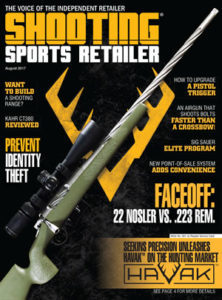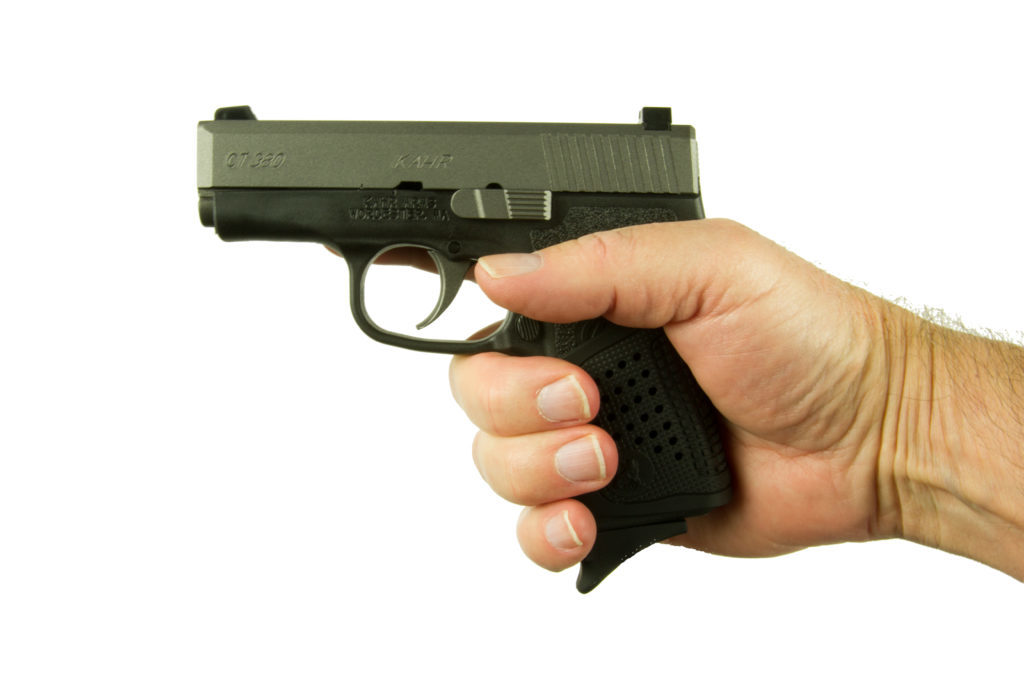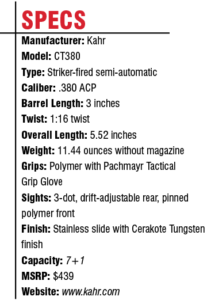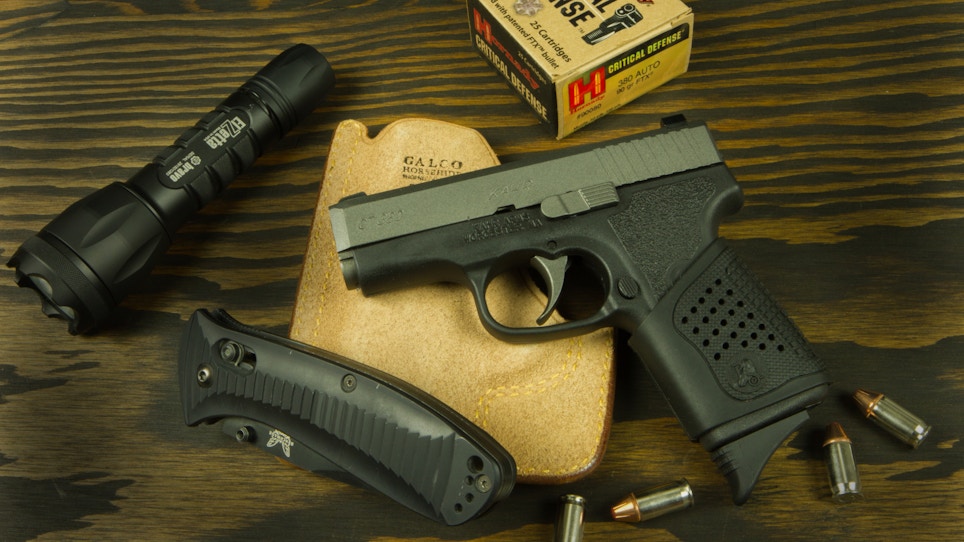Kahr was ahead of its time in 1995 when it introduced its K Series of small, steel-frame, easy-to-carry handguns. Only a little larger than the standard in-pocket Walther PPK, the new Kahr handguns brought full-size gun-handling characteristics and more powerful cartridges to subcompact models.
Among the improvements over other small guns was a set of full-size iron sights that could be drift adjusted. Another innovation was the extremely smooth and consistent double-action-only trigger for the striker-fired gun, along with a comfortable grip. These features surprised many and made the gun shoot more like a full-size gun.

From our August issue
As time passed, Kahr introduced other models into the line, but it kept the features that made the Kahrs so attractive. Among the new introductions were a line of polymer-frame pistols that still handled like a larger gun, but weighed less than the earlier steel-frame Kahrs. This made them even more attractive to the growing concealed-carry market.
Barrel and grip lengths began to shrink, but still the guns retained the features Kahr fans desired. Somewhere along the line, different calibers were introduced until Kahr eventually added the .380 ACP — in recognition of the improved terminal ballistics of that round — to the .45 ACP, .40 S&W and 9mm. And to stay competitive, Kahr introduced guns with the same handling characteristics as its earlier models, but with modifications that allowed Kahr to sell them at a lower price. The CT380 is one of the recent additions to what Kahr calls its Value Series.
In order to lower production costs and allow Kahr to reduce the suggested retail price, conventional land and groove rifling replaced the polygonal rifling of the more expensive guns. The outside appearance of the slide was changed slightly to reduce the number of machine cuts required to produce it and fewer machining operations were performed on the interior of the slide. Markings on the outside of the slide were reduced and the method of imprinting them was changed to make them less expensive to apply. Additionally, a polymer-pinned front sight replaced the drift adjustable steel front sight of the original Kahrs. And instead of a slide stop with a rotating shaft to reduce friction, the slide stop in the Value Series guns is a conventional one-piece metal injection molded design. So even though the Value Series guns retain the same functional features as the more expensive models, they represent a less expensive alternative for those who want those same features but are not willing to pay premium prices.
Reliability and handling characteristics are the most important features of any gun carried for self-defense, and the Kahr CT380 is not lacking in those respects when compared to its more expensive brothers. During testing for this article, a variety of self-defense .380 ACP rounds were fired with no malfunctions of any kind — even during the manufacturer’s recommended 200-round break-in period. Incidentally, Kahr is also aware that its guns are often carried for self-defense and recommends a minimum of 100 rounds of the selected self-defense load be tested in its guns to verify functional reliability before using that load for self-defense.
The CT380 is a fairly thin gun, but not as thin as some other small .380 ACP handguns on the market. It seems to be a good compromise in width — it is not so wide as to be hard to carry discreetly, but is not so narrow that felt recoil is severe. The gun proved to be very comfortable to shoot, unlike some comparable .380 ACP pocket pistols that tend to cause some discomfort in the shooting hand due to light weight, slim design and the effects of recoil.
The gun was shipped with a Pachmayr Tactical Grip Glove, which is a cushioned polymer sleeve that slips over the grip adding a bit to the width — which spreads the recoil impulse over a larger portion of the palm thereby reducing discomfort. It is very effective and also provides a more slip-resistant surface than the already slip-resistant surface of the polymer grip.
The Grip Glove is highly recommended for its effectiveness in increasing comfort. In fact, the CT380 shoots surprisingly more like a full-size service gun than a pocket pistol. Most shooters would be able to put many more rounds through it in a single range session than they would be able to do with most comparable small guns. This feature is certainly a selling point, especially if the buyer is sensitive to recoil, inexperienced and insists on a small, lightweight carry gun.
 Contributing to the reduction of felt recoil is the polymer frame. It tends to absorb some recoil and the low-bore axis is made possible by the barrel cam system and feed ramp design. With the bore closer to the hand, muzzle flip is reduced which is a major contributor to felt recoil. An interesting characteristic of the Kahrs is the feed ramp that is offset slightly to the left. While feeding is still reliable, moving the ramp to one side allows the trigger bar to be offset to the other side instead of below, which allows the barrel axis to be lower.
Contributing to the reduction of felt recoil is the polymer frame. It tends to absorb some recoil and the low-bore axis is made possible by the barrel cam system and feed ramp design. With the bore closer to the hand, muzzle flip is reduced which is a major contributor to felt recoil. An interesting characteristic of the Kahrs is the feed ramp that is offset slightly to the left. While feeding is still reliable, moving the ramp to one side allows the trigger bar to be offset to the other side instead of below, which allows the barrel axis to be lower.
The feed ramp on the sample gun was nicely polished and the trigger had the extremely smooth, long stroke common to the Kahrs. Although the stroke was long and the trigger finishes the job of retracting the striker that is partially retracted when the slide is cycled, there was only a tiny bit of stacking before a surprise break of about 6½ pounds. There was just a bit of overtravel, and reset was distinct for those interested in this over-emphasized characteristic.
The CT380 comes with one seven-round stainless steel magazine with a polymer baseplate featuring a finger extension. The finger extension is particularly helpful for controlling the gun under recoil because it provides a surface for the little finger to participate in gripping the gun, especially for those with larger hands. There is no magazine disconnect on the CT380 and the slide locks back after the last round is fired. But, unfortunately, to keep the retail price low, the gun comes with only one magazine, so the buyer is counseled strongly to buy more magazines.
More magazines are important because magazines are a common cause of failure with semi-automatic firearms. Having a malfunction in the middle of a gunfight is often corrected with only a change of magazines. So, it is beneficial to carry at least one spare — two is even better. After all, one of the major reasons law enforcement agencies began switching to semi-automatics from revolvers in the late 1900s was the speed of reloading and larger capacity. It seems silly then to carry a semi-auto and not take advantage of this feature.
The CT380 has a stainless steel slide and is available with a matte finish or the Cerakote Tungsten finish on the test gun. Cerakote is an extremely hard, durable coating that is applied over the metal. The Tungsten-colored Cerakote has a dark grey appearance that contrasts nicely with the black polymer of the frame and grip. And for those concerned about bright or shiny surfaces attracting attention, the Tungsten Cerakote is dark and flat enough to eliminate any concerns.
There is no external safety on the CT380, but the gun does have an internal, passive striker block that is disengaged when the trigger is pulled. Because of this feature, most people will carry the gun with a round in the chamber. But unlike some other Kahr models, the extractor does not protrude from the side of the slide to indicate that a round is chambered. Well-trained, experienced shooters will partially retract the slide to check visually and by feel. If the gun is intended to be empty and unloaded, those same shooters will lock the slide to the rear to check that no ammunition is in the gun rather than rely on a mechanical indicator anyway.
 Disassembly of the CT380 follows the same steps as the other Kahr models. After making absolutely sure the gun is unloaded, the slide is partially retracted until the witness marks on the frame and slide align. This orients a half-moon cutout in the slide with a tab on the slide catch. Then the slide catch shaft is pushed from right to left — this may require a light tap with something like a screwdriver handle to dislodge it — and withdrawn from the gun. The slide is then pushed forward off the frame after pulling the trigger.
Disassembly of the CT380 follows the same steps as the other Kahr models. After making absolutely sure the gun is unloaded, the slide is partially retracted until the witness marks on the frame and slide align. This orients a half-moon cutout in the slide with a tab on the slide catch. Then the slide catch shaft is pushed from right to left — this may require a light tap with something like a screwdriver handle to dislodge it — and withdrawn from the gun. The slide is then pushed forward off the frame after pulling the trigger.
The spring and guide rod assembly is then removed, after which the barrel can be separated from the slide. The dual recoil springs can then be taken off the steel guide rod. Assembly is in reverse order, but when putting the slide back on the frame, the ejector might have to be pushed inwards towards the frame to clear the slide. On the sample gun, it was not necessary, but it was difficult to move the slide forward off the frame because of the temporary misalignment of some parts. With a little manipulation though, the slide did come off the gun.
Retracting the slide on this locked breech, tilt-barreled gun may be a little difficult for some shooters with weak grips because the recoil springs are fairly strong and the slide is thin. The cocking serrations on the slide are aggressive though, so with a little practice most shooters should be able to rack the slide.
Your retail customers looking for a small, lightweight semi-automatic handgun for carry would do well to consider the Kahr CT380 for its big-gun handling and shooting characteristics. For more information, contact Kahr Arms at (508) 635-1450 or online at www.kahr.com.






